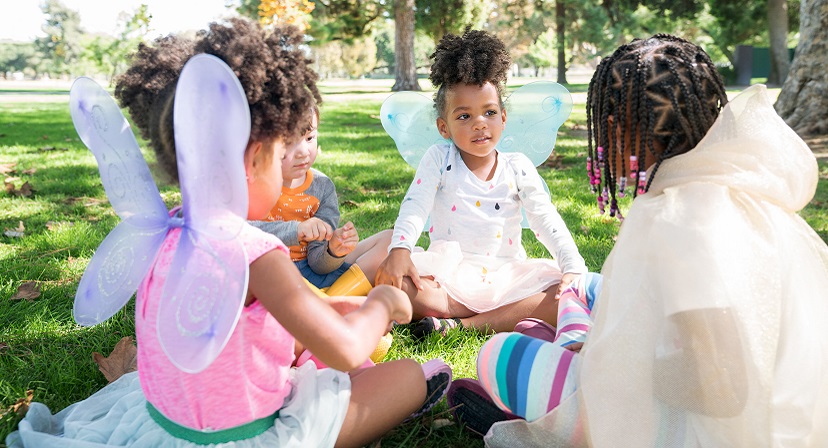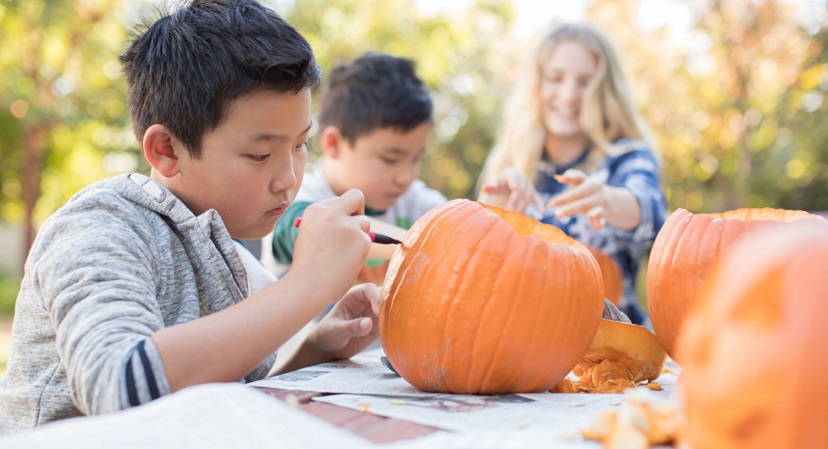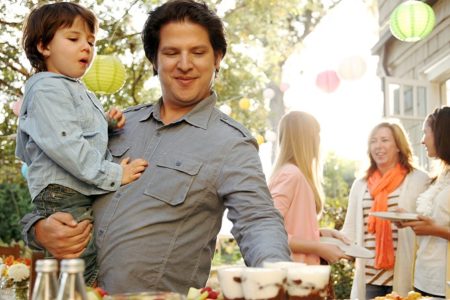
Children playing in the park
For many children of all ages, Halloween is synonymous with the American tradition of dressing up in costume and heading out into the neighborhood with friends and family to trick-or-treat and collect candy in the crisp autumn air.
However, as COVID-19 is still spreading throughout much of the country, and California public health officials strongly discouraging trick-or-treating, this year’s Halloween celebrations are taking on a different spin, with families being advised to take extra precautions and finding new and creative ways to safely celebrate this holiday.
“These are challenging times, and with that comes a responsibility to take extra precautions to protect our children’s health,” said Dr. Daisy Dodd, a pediatric infectious disease specialist with Kaiser Permanente Southern California, which is headquartered in Pasadena. “What that means is we need to be more creative in the way we celebrate Halloween this year, without putting our health or the health of our children at risk.”

Children carving pumpkins
According to the Centers for Disease Control and Prevention, parents should consider lower-risk and safe alternatives to traditional trick-or-treat activities this year. They include;
• Having a scavenger hunt-style trick-or-treat search with your household members in or around your home rather than going from house to house.
• Having a Halloween scavenger hunt where children are given lists of Halloween-themed things to look for while they walk outdoors from house to house admiring Halloween decorations at a distance.
• Having a virtual Halloween costume contest.
• Having a Halloween movie night with people you live with.
• Carving or decorating pumpkins with members of your household and displaying them.
• Carving or decorating pumpkins outside, at a safe distance, with neighbors or friends.
• Decorating your house, apartment, or living space.
The CDC advises families against participating in higher-risk activities to help prevent the spread of the coronavirus that causes COVID-19. These types of discouraged activities include:
• Participating in traditional trick-or-treating where treats are handed to children who go door to door.
• Having trunk-or-treat where treats are handed out from trunks of cars lined up in large parking lots.
• Attending crowded costume parties held indoors.
• Going to an indoor haunted house where people may be crowded together.
• Going on hayrides or tractor rides with people who are not in your household.
• Traveling to a rural fall festival that is not in your community if you live in an area with community spread of COVID-19.
If you’re still planning on having your children trick-or-treat, Dr. Dodd encourages parents to limit their children’s exposure by going to a known area such as a church or a friend’s house. She stressed the importance of always wearing masks and gloves.
According to the CDC, a costume mask for Halloween is not a substitute for a cloth mask. To better protect your health, consider using a Halloween-themed protective cloth mask instead. Do not wear a costume mask over a protective cloth mask, because it can be dangerous if the costume mask makes it hard to breathe.
Once you return home from trick-or-treating, Dr. Dodd urged everyone to wash their hands, and let all candy “air out” for a few hours before eating it.
“It’s best to not participate in traditional trick-or treat activities this year, as it can be difficult to maintain proper physical distancing at front doors and on crowded sidewalks,” Dr. Dodd said. “The bottom line is the coronavirus is still out there, and we cannot let our guard down. By taking simple precautions and considering alternatives, we can ensure that our children will still enjoy the holiday in a way that is safer for everyone involved.”













